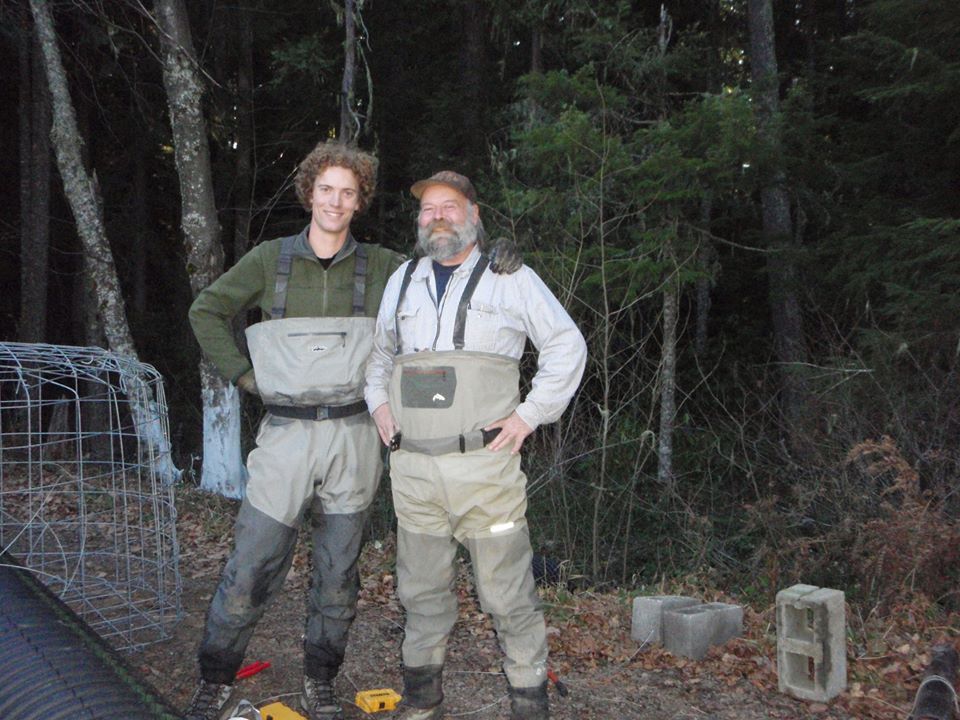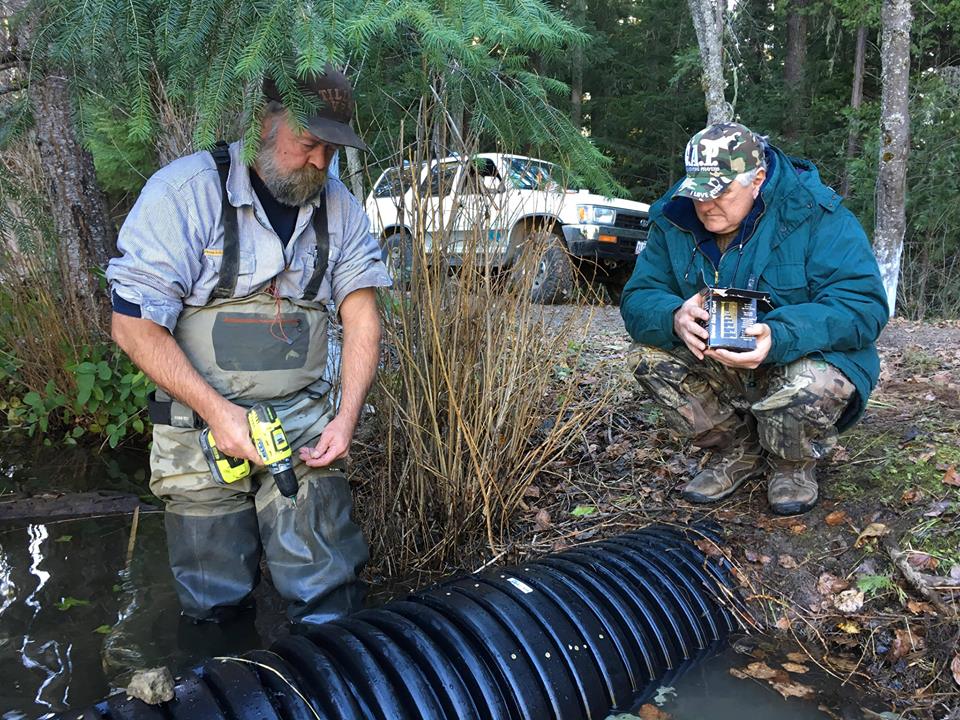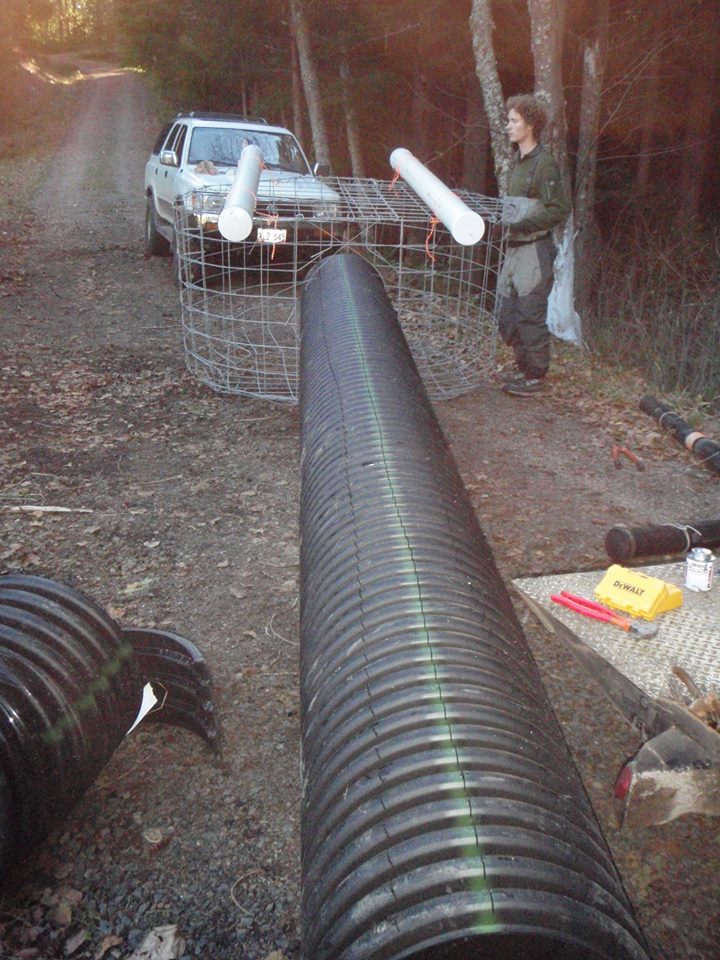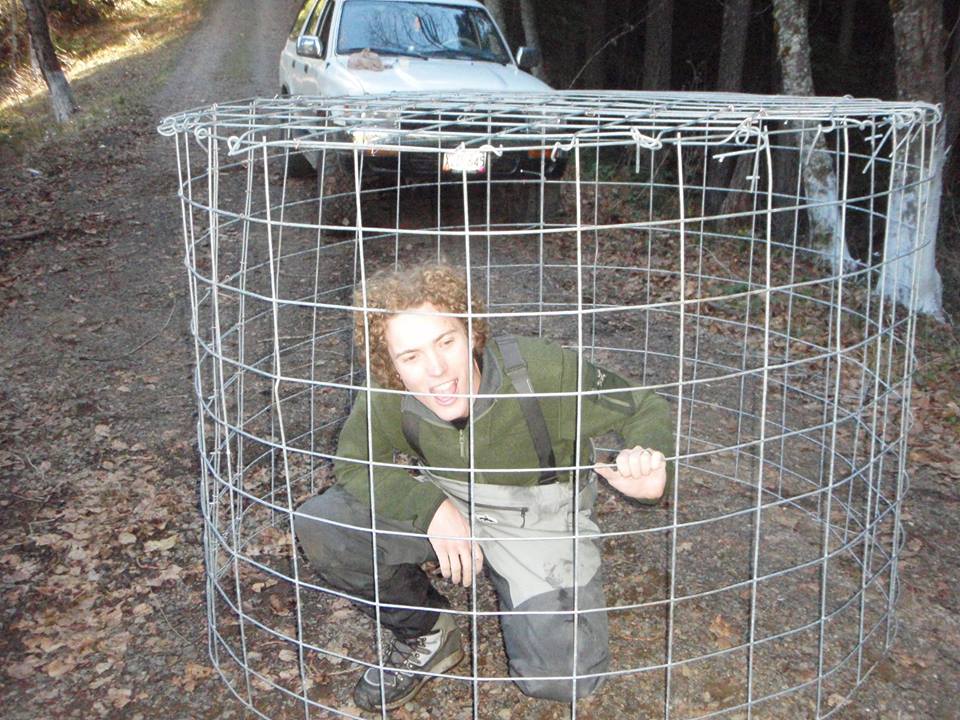I”m thinking it’s time for another beaver hero article with good strong folks working to solve problems. Skip Lisle and Mike Callahan are both great, but they’re the old guard, bringing up the rear. Who’s new to the field and making waves?
Listening to the Land: Oregon’s threatened wildlife
 For several years, wildlife biologist and Beaver State Wildlife Solutions owner Jakob Shockey has developed and implemented anti-lethal solutions to help property owners deal with beavers and the challenges they can present when they take up residence.
For several years, wildlife biologist and Beaver State Wildlife Solutions owner Jakob Shockey has developed and implemented anti-lethal solutions to help property owners deal with beavers and the challenges they can present when they take up residence.
Shockey, who grew up on a farm in the Siskiyou Mountains, shared various ideas and solutions during his presentation “Resolving Conflicts with Beaver Using Natural Science and Design” at the Necanicum Watershed Council’s Listening to the Land event at Seaside Public Library on March 20.
Hurray for Jakob Shockley and Beaver State Wildlife Solutions! I remember the buzzing excitement of his recruit at the state of the beaver conference in 2013. Everyone was eager to see the torch being carried to the next generation and Jakob was more than up to the task. Plus we were grateful to finally have someone doing this work in Oregon.
Beavers can create problems for land owners in two primary ways: Building dams that block waterways and/or cause flooding, and tree mortality, or cutting down trees, in particular. To resolve these conflicts, land owners have a number of options, including trapping, relocating or killing them.
Shockey’s goal, however, is to help residents instead pursue predictive management, which includes working within the ecosystems of streams, rivers and wetlands and implementing long-term and cost-effective solutions that serve as alternatives to bullets and bait.
“If you’ve got beaver at your site, that means it is good beaver habitat,” he said. “If you open that niche up, there is going to be another population at some point. … You start getting on a treadmill of removal — doesn’t matter if it’s lethal removal or relocation. If you’re taking animals out of a territory that’s been deemed high-value by the animal, there are going to be more that come in.”
Well now doesn’t that sound reasonable? If a beaver is on your land it’s because it’s land that supports beavers. Killing one won’t solve your problem. Killing five won’t either. Identify the problem that needs solving and let the beaver stay like a kind of watch-beaver to keep others away.
When it comes to tree-cutting, Shockey said, effective solutions include surrounding the base and root collar with welded 2”-by-4” wire at least 30” inches above the ground and 24” above the snow line; and covering the surface of a tree base with a mixture of latex paint and clean, dry sand. For large areas, such as orchards or crop fields, land owners also can consider electric fences, as long as they maintain the vegetation beneath the fence.
To address flooding—the other primary conflict, which can cause impoundment and damage to urban infrastructure and cropland—Shockey suggests installing flow devices. They fall into three main categories: flexible pond levelers; trapezoidal culvert fences; and fence and pipe systems.
In all cases, the devices capitalize on natural science and beaver behavior to address potential negative ramifications of damming without relocating or harming wildlife. Shockey pointed out a potential issue with flow devices is property owners can be held liable if they alter a beaver dam and it causes flooding on neighboring property.
What a fantastic article. Jakob must be very good at explaining his case to reporters because the writer has picked up all the salient points. Use natural science to take on beavers, and get Jakob on your side!
The endeavor is worthwhile, in Shockey’s estimation, because beavers are a keystone species in the Pacific Northwest. Their dams create wetland ecosystems that provide nesting sites for birds and increase fish and waterfowl populations.
“There is a myriad of animals that depend on the systems the beavers build,” he said. With beaver being an animal whose presence is quantifiably proven to increase water supplies, suitable habitat and fish populations, he added, a question to ask is, “How can we kind of get out of their way and let that happen?”
WONDERFUL! We here at Worth A Dam are all about getting out of a beavers way. They bring benefits we just can’t and they do it for free. If we can let them do their job we will be the happier for it. I believe I said something like that myself.













































